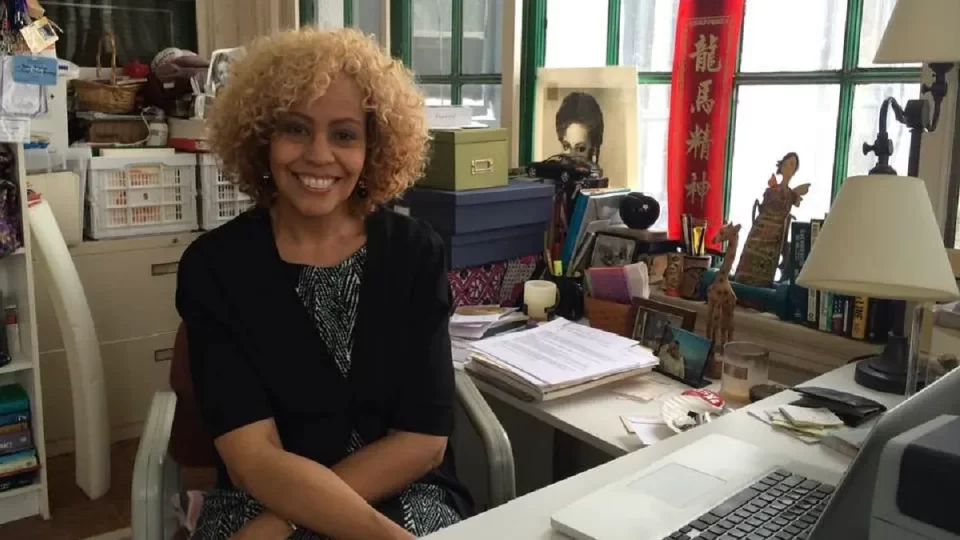Chicagoan Continued Her Work, Even in Retirement
Support Journal-ismsDonations are tax-deductible.
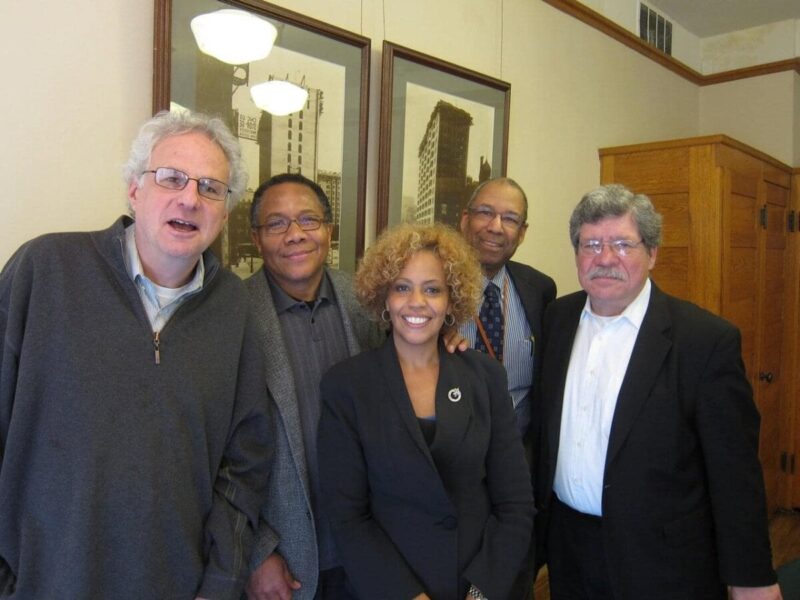
Renee Ferguson is flanked by journalists Monroe Anderson, to her immediate left, and N. Don Wycliff in a photo posted on Facebook. She wrote there on April 10, “Tomorrow I’m having Endoscopic Surgery. Please pray for my healing and for my return to writing and speaking for myself and others. . . .”
Chicagoan Continued Her Work, Even in Retirement
Renee Ferguson, who spent more than 25 years as a reporter on two Chicago television stations, made history as the first Black woman to work as an investigative reporter on TV there, and co-founded the Chicago chapter of the National Association of Black Journalists, died Friday in home hospice care, Chicago media reported late Friday. She was 75.
In an additional distinction, Ferguson was an unlikely mother figure for former Transportation Secretary Pete Buttigieg, taking him into her home while supervising him at WMAQ-TV in 2002, when Buttegieg was a college intern at the station.
“I learned so much from Renee Ferguson,” Buttigieg, former U.S. secretary of transportation, wrote Friday night on X. “She made countless lives better through her brilliant investigative journalism — as well as her mentorship of young people looking to make a difference. I’m so sad to learn of her passing, but also know that her impact and example will live on across Chicagoland and far beyond.”
Ferguson also expounded to Journal-isms, of which she was a supporter, on the opposition by television news executives to Black women wearing their hair naturally.
After a Nieman fellowship at Harvard University in 2007, Ferguson wrote how “I had spent most of my Nieman year happily liberated from the tyranny of straight hair.” But, she wrote, “Returning to work, my news director, an African-American woman, insisted that I return to my straight, neat, corporate (whatever you want to call it) not-nappy, hair again. Thirty years have passed since this same issue was raised with me and, while the messenger was decidedly different, the message was the same: ‘Welcome back, but leave the Afro at Harvard.'”
She added in a 2009 email, “Television, designed as an advertising vehicle, had news and journalism foisted upon it by the government that required that the stations operate ‘in the public interest’ in return for the license to ‘advertise’ over the airwaves. Broadcast journalists operate inside a medium designed to sell products to the viewing public. For TV personalities to appear outside of that ”norm’ goes against the TV zeitgeist if you will.”

Ken Smikle and wife Renee Ferguson with former President Barack Obama, who also lived in their Kenwood neighborhood in Chicago. (Credit: Provided to Chicago Sun-Times)
Over her career, Bob Goldsborough wrote for the Chicago Tribune, Ferguson “established herself as one of Chicago’s premier investigative reporters, winning seven Chicago Emmy awards plus an Alfred I. duPont-Columbia University Award for investigative reporting.
“ ‘Renee had this incredible ability to convince the powers that be in the newsroom to give her these really interesting assignments,’ said former WBBM-Ch. 2 Director of Community Affairs Monroe Anderson, a longtime friend. ‘She knew how to work things out. She was really talented. And she was a good reporter.’ . . .
“An Oklahoma native, Ferguson graduated in 1967 from Douglass High School in Oklahoma City. She then earned a bachelor’s degree in journalism from Indiana University in 1971.
“ ‘Renee and I were the only two Black students in the journalism department at Indiana University (at that time),’ Anderson recalled.
“After college, Ferguson worked as a writer for the Indianapolis Star before taking a job at a TV station, WLWI-TV, in Indianapolis in 1972. She spent five years at the station, which in 1976 took on the call letters WTHR-TV, and worked alongside a young, wisecracking weather forecaster named David Letterman, who would go on to national fame.
“In 1977, Ferguson joined WBBM-Ch. 2 as a reporter. While at the station, she drew national headlines for an investigative piece she reported that debunked the highly acclaimed Westside Preparatory School founder and teacher Marva Collins. By the late 1970s, Collins had become nationally recognized for her work, and Ferguson’s report threw cold water on that national praise, accusing the educator of lacking the background and temperament to teach and also alleging that Collins had not gotten the results she had said she was getting, and that she had used high-pressure techniques to collect tuition payments.
“While at CBS 2, Ferguson also began hosting the public affairs talk show ‘Common Ground’ in 1981.
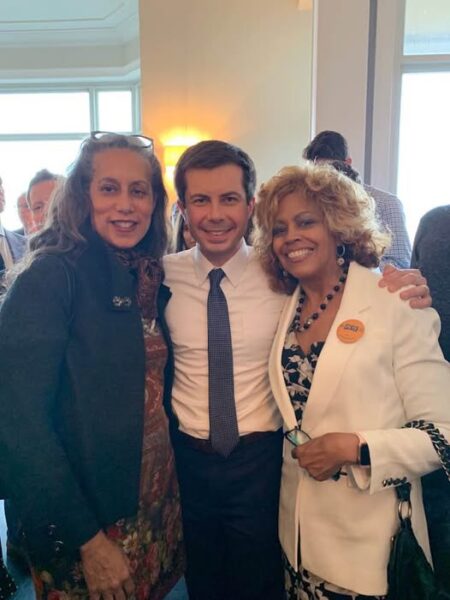
Renee Ferguson, at right, in Chicago in 2019 “with Attorney Rebecca Ford and Presidential Candidate Mayor Pete Buttigieg. I’m so proud of the way that Pete is conducting his campaign. He’ll be a great American President! #proudothermother,” she wrote on Facebook.
“ ‘Renee always thought of herself as the voice of the voiceless,’ said retired WMAQ-Ch. 5 vice president of news and station manager Frank Whittaker, who first worked with Ferguson at Channel 2. ‘She would take on stories that nobody else would take on because she believed in what people were telling her and what she believed was the truth and she was going to be their voice.’
” . . . One of Ferguson’s early reports was ‘Project Africa,’ which was the product of an idea Ferguson had with a Near West Side elementary school principal in which they would bring nine children from Chicago’s toughest streets to Africa for two weeks.
“The project required students wanting to take the trip to commit themselves to extra attendance both before and after school to study French, photography and West African culture. . . . “
Cindy Hernandez quoted Ferguson friend Marion Brooks, a news anchor and reporter at WMAQ, in the Chicago Sun-Times:
“She was an amazing investigator. Had great instincts. She had a real gift to help people open up and was an amazing storyteller, and a great writer. She knew how to craft a story to really pull out the heartfelt moments and would make people care.
“Her reporting helped lead to the exoneration of Tyrone Hood — a man who was wrongfully convicted of murder and armed robbery in the 1993 slaying of a star basketball player at the Illinois Institute of Technology,” Hernandez continued.
” ‘She wrote many stories about the case, including her last story at NBC5,’ ” as WMAQ is also known.
“Hood’s sentence was commuted in 2015 by Gov. Pat Quinn.
“In an interview with NBC5, Ms. Ferguson said commuting Hood’s sentence was the last thing Quinn did on his last day as governor because she called him at the last minute.”
Regina Waldroup, WMAQ reporter, “was Ms. Ferguson’s intern when she began investigating Hood’s case and remembered her mentor was ‘determined’ to tell his story and get him released.
“ ‘I like to say I’m a workhorse now, and it’s all because of this woman,” Waldroup said. “I want to do stories that make a difference. Because, just like my mentor, I love what I do, maybe too much. I don’t give 100%; I give 150% because of everything Renee taught me.”
In the 1970s, Ava Thompson Greenwell, Ph.D, wrote in her 2021 book, “Ladies Leading: The Black Women Who Control Television News.
“Ferguson’s television news bosses told her to change her hair when she appeared on camera wearing an Afro, asserting she looked too militant. Not much had changed by 2007 when Ferguson again tried to wear a short Afro style on-air. This time it was not a white male, but her African American female news director who ordered her to return to her straightened style.”
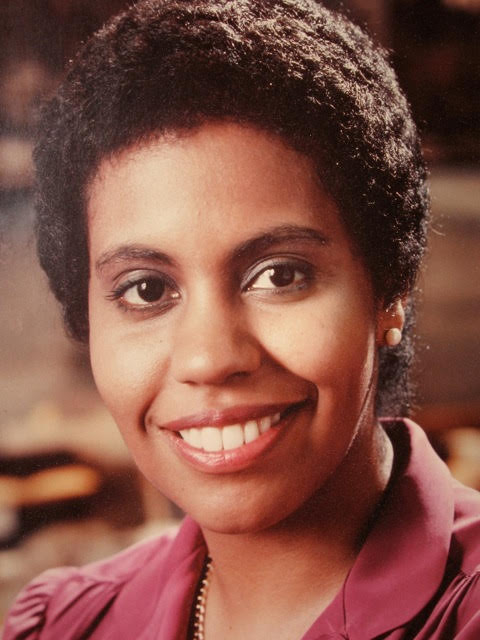 Ferguson also wrote after her Nieman fellowship, ““When my news director at Channel 13 in Indianapolis told me my afro scared white people he was reflecting his concern for advertising revenues that paid our salaries. Hair, clothes, plastic surgery, weight issues, aging issues — American women are brainwashed. I worked for 35 years in one of the main vehicles of that brainwashing . . . done mostly to sell products. I include myself among the happy hairweave wearing, fashion loving, spanx buying, brainwashees.” (Photo from her time at WBBM in 1987)
Ferguson also wrote after her Nieman fellowship, ““When my news director at Channel 13 in Indianapolis told me my afro scared white people he was reflecting his concern for advertising revenues that paid our salaries. Hair, clothes, plastic surgery, weight issues, aging issues — American women are brainwashed. I worked for 35 years in one of the main vehicles of that brainwashing . . . done mostly to sell products. I include myself among the happy hairweave wearing, fashion loving, spanx buying, brainwashees.” (Photo from her time at WBBM in 1987)
“Ferguson retired from NBC 5 in 2008 and soon began working as a spokeswoman for former U.S. Sen. Carol Moseley-Braun during Moseley-Braun’s unsuccessful 2011 bid to become Chicago mayor. She later served as a press secretary for U.S. Rep. Bobby Rush,” the Tribune wrote.
Ferguson’s husband of 34 years, Ken Smikle, well-known among many journalists as leader of the African American marketing firm Target Market News, died in 2018 “after his wife made a poignant plea for a donor heart,” Maudlyne Ihejirika reported at the time for the Sun-Times.
Ferguson continued her quest for donors after her husband’s death. “This moment is not just a personal moment for me. It isn’t just my husband. People need organs everyday. It’s an opportunity to remind everyone to please consider organ donorship. Consider giving someone the gift of life and the gift of hope.”
Ferguson was a Journal-isms supporter and said in a testimonial that its “aggregation of black voices is profound and powerful.” Addressing its author, she continued, “Thank you for your work and the courage of your convictions.” (scroll down)
After a column on the commutation of Hood’s sentence, Ferguson messaged, “It is a good story and an example of the kind of thing that you and I went into journalism to do. The media landscape has changed but the ethic of social justice journalism is as old as The Republic Itself.
“The watchdog function of our free press is robust and alive. When combined with a determined never give up search for truth, great things can happen! Even in retirement!”
She is survived by a son, Jason Smikle.
- Peter Buttigieg, Facebook: Renee, I’m forever grateful for your mentorship and for welcoming me like family. I’ll do my best to keep making you proud. (Feb. 28, 2020) (Video)
- Renee Ferguson, Crain’s Chicago Business: Battling racism on the small screen (Feb 20, 2020)
- Journal-isms: Straight Talk on TV Hair (Aug. 8, 2021)
- Journal-isms: They Can’t Be Seen as the ‘Angry Black Woman’ (Aug. 5, 2021)
- Journal-isms: Why So Many Black Women Have Hair Stories (July 23, 2021)
- Journal-isms: ‘Good Hair’ on the TV Set (Oct. 8, 2009)
More in Media Call Out Trump’s Racism
June 2, 2025
Researchers Have Found Long-Term Consequences
Sacha Jenkins Dies; Hip-Hop Journalist, Filmmaker
A Campus DEI Success Story, Too Seldom Told
NABJ Decries Harassment; Follows Piece on Lowery
Afro-Cuban Journo’s Arrest Called Example of Racism
[En Espanol: https://tinyurl.com/yfnbxnfc]
. . . Dire Times for Human Rights in Cuba
Americas Group Alarmed by Rise in Exiled Journos
(more to come)
Homepage photo by Michael S. Williamson/Washington Post
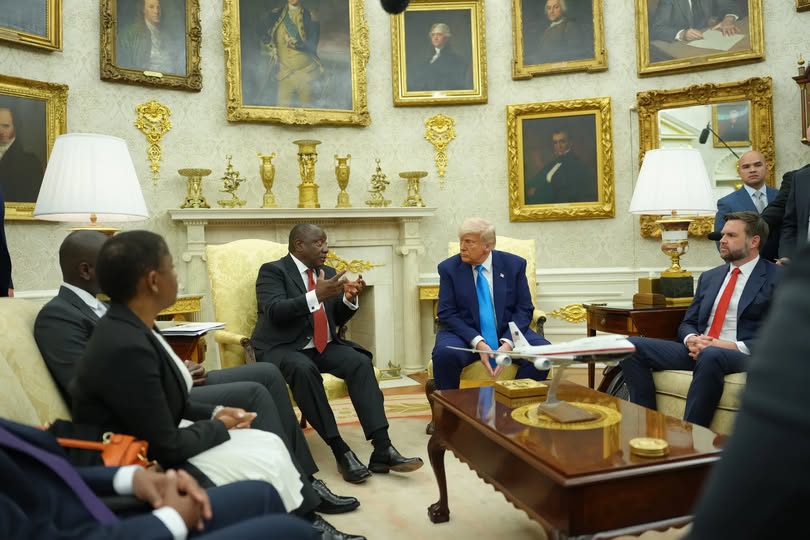
During the next day’s White House briefing, NBC’s Yamiche Alcindor asked, “The president showed a video that he said showed more than 1,000 burial sites of White South Africans that he said were murdered. We know that that was not true and that the video wasn’t true; so I wonder, why did the president choose to show that?” Press secretary Karoline Leavitt insisted, falsely, that the video “showed white crosses representing people who have perished because of racial persecution.” (Credit: Eric Lee/New York Times)
Researchers Have Found Long-Term Consequences
Perhaps it was the revulsion at the blatant lies President Trump told South Africa’s president on live television claiming white South African farmers were being killed, and the pass he gave 49 white Afrikaners to enter the United States, while tightening restrictions on others.
But as we begin June, more in the mainstream media are saying it out loud: That is, that Trump is a racist.
Consider the “PBS News Hour” of May 23. Co-anchor Geoff Bennett said to commentators David Brooks and Jonathan Capehart, “In what many people described as an ambush, the president, as you see there, he used misrepresented images to support false claims of white genocide in South Africa, really the latest data point in Trump’s history with race and white grievance.
“How did this meeting strike you and President Trump’s overall message?
Brooks, the conservative, replied, “Two obvious things. Donald Trump seems to be hostile to all immigrants, unless your ancestors created apartheid. And so the racial element, it’s pretty obvious. . . .”
Capehart said, “The Oval Office is no longer a serious place of business. Leaders go in there. And now I watch to see, how is the president going to humiliate this person in the most unserious way possible, while at the same time lending credence to already debunked racist theories?
“And I am glad you pointed out the fact that this president has a long history of racist comments, racist actions, and peddling white grievance. And he has a problem with immigrants, as long as they don’t come from — quote, unquote — ‘S-hole countries.’
“And usually those countries that he defines that way are not white.”
The New York Times, the BBC and others were blunt in their reporting of the meeting.
It “was striking how cordial he was to the white South Africans — two professional golfers and a luxury goods magnate — while clashing with or dismissing [South African president Cyril] Ramaphosa,” wrote Zolan Kanno-Youngs, White House reporter for the Times and a Black journalist.
“When the South African leader tried to turn the conversation to trade or shared investments, Trump brought it back to the false claims of mass killings against white South African farmers.” Kanno-Youngs was part of a reporting time that included John Eligon, another Black journalist and Times South African bureau chief, among others.
Just as racial issues are not the only ones where Trump has spread falsehoods with dangerous consequences, the meetings with foreign leaders are not the only times where his conduct has earned the “R” word.
The same day, the Justice Department said it was moving to drop police reform agreements, known as consent decrees, that the Biden-era department reached with Louisville, Ky., and Minneapolis. The court-enforceable agreements were born out of probes launched after the 2020 killings of Breonna Taylor and George Floyd, both Black victims of police violence.
Jamiles Lartey and Daphne Duret wrote May 24 for the Marshall Project, “The overall efficacy of these federal interventions has long been debated, but a new analysis published by the Mapping Police Violence database this week suggests they may contribute to reduced use of force.
“The report found that nearly three-quarters of the 18 departments with reform agreements in the researchers’ data decreased their use of force; however, among all agencies nationwide, only half saw decreases. That doesn’t prove that the reforms solely caused the drop, but the contrast is notable, especially considering the analysis’ findings that use of force rose over the same five-year period for departments with no federal involvement.”
In Inside Higher Ed, David Hawkins wrote May 27 about the Trump administration’s “effort to impose new, extensive regulatory and investigatory shackles on colleges.”
Hawkins, chief education and policy officer at the National Association for College Admission Counseling, wrote, “The idea, too, that the presence of ‘too many’ Black or Hispanic students at a selective college indicates that the institution must have run afoul of the law carries with it the insidious notion that Black and Hispanic students are, or must be, inferior to white students. On that tired, long-discredited basis, the administration appears poised to institute an unprecedented degree of federal intrusion into university admissions, using the very means their ideological backers declared so odious to their sense of right and justice.”
View this post on Instagram
Trump biographer Michael Wolff minced no words in an interview with The Daily Beast:
“Clearly, he has some issue with Black people. The world is a better place to him without Black people, or without having to be aware of Black people, without Black people somehow in what he considers a zero sum game with white people.”
What is no doubt more important than these individual incidents is their cumulative and long-lasting effect.
In 2023, in the journal Current Research in Ecological and Social Psychology, Ashley Jardina and Spencer Piston wrote,
“Reported hate crimes against Black people surged following Trump’s election. While only a relatively small fraction of Americans committed these abhorrent actions, we show that Trump’s victory had broader effects on the attitudes of the larger white public. . . . These findings suggest Trump’s victory had a polarizing effect on whites’ expression of dehumanizing views of Black people, with important implications for scholars’ understanding of the sociopolitical factors that can affect dehumanizing attitudes and the normalization of racism in the U.S. today.”
Similarly, Vanessa Williamson and Isabella Gelfand of the Brookings Institution, writing in 2019, near the end of Trump’s first term, concluded, “there is a clear correlation between Trump campaign events and incidents of prejudiced violence. FBI data show that since Trump’s election there has been an anomalous spike in hate crimes concentrated in counties where Trump won by larger margins. It was the second-largest uptick in hate crimes in the 25 years for which data are available, second only to the spike after September 11, 2001.”
David Cay Johnston, on his DC Report site, saw the increase in racism tied to economics. “The Black jobless rate fell 2.1 percentage points while the white rate barely changed, slipping only 0.2 percentage points. To [Trump adviser Stephen] Miller and Trump, what more evidence do you need that Whites are victims, losing out on jobs to people of color and women who get hired only because of what they perceive to be anti-White and anti-male policies?
“Numbers like these show America moving to a less unequal, less racist society. But to those who want to Make America White Again, who want minorities and women to know their place, the relative change is clear evidence of discrimination against White people, no matter how crazy that interpretation is. . . .
“Team Trump wants all the fruits of our economy to go to White people, leaving just enough scraps for people of color and women to dissuade informed and effective opposition. And even among White people, only those loyal to Trump deserve anything more than misery.””
Where does this leave journalists, in addition to calling out racism when it shows itself?
The Brookings team wrote in 2019, “increasingly, partisanship skews what Americans think qualifies as racist.
“But there is no excuse for avoiding clear, accurate descriptions of American political dynamics. When the data show that President Trump’s support stems from racist and sexist beliefs, and that his election emboldened Americans to engage in racist behavior, it is the responsibility of social scientists and other political observers to say so.”
- American Civil Liberties Union: Trump on DEI And Anti-Discrimination Law
- Zaire Breedlove, Atlanta Journal-Constitution: Lonnie Bunch defends Smithsonian’s truth-telling mission at John Lewis Gala
- Willy Blackmore, Word in Black: Disaster Aid Was Already Unequal. Will Changes at FEMA Make Things Worse? (May 19)
- Stacy M. Brown, Black Press USA: Hate and Chaos Rise in Trump’s America (May 23)
- Jonathan Capehart, Washington Post: Keith Ellison on countering Trump: Courage, imagination and lots of lawsuits (May 25)
- Tiffany Hamilton, BlackAMericaWeb: Karens, Klans And Caucasian Tears: The Grift Of Racism In America
- Lynsey Chutel and Monika Cvorak, New York Times: Trump Showed Images of ‘Genocide’ in South Africa. One Was From the War in Congo. (May 23)
- Marquise Francis, NBCBLK: Dermatologists say Marines’ tightened shaving waiver could hurt Black members’ careers (May 24)
- Angela Fu, Poynter Institute: Trump’s ban on Harvard’s ability to enroll international students may affect the Nieman Fellowship
- Rachael Fugardi and Lydia Bates, Southern Poverty Law Center: From screens to schools: Male supremacy’s impact and prevention tactics
- Erica L. Green, New York Times: As Trump Attacks Diversity, a Racist Undercurrent Surfaces (Feb. 3)
- Alex Griffing, Mediaite: Tomi Lahren Joins ‘The World’s Most Dangerous Morning Show’ And Is Straight Up Asked: ‘Are You a Racist?’
- Betty Lin-Fisher, USA Today: Black church leader calls for electronic protest of Dollar General over DEI retreat
- Caleb Kieffer, R.G. Cravens, Hannah Gais and Rachel Carroll Rivas, Southern Poverty Law Center: The false fear of ‘white genocide’
- Nesrine Malik, the Guardian: White South African ‘refugees’? The jokes write themselves (May 21)
- Julian Mark, Washington Post: Trump administration moves to upend $37B affirmative action program
- Julian Mark, Washington Post: Civil rights agencies that once promoted DEI now work to wipe it out
- Julian Mark and Laura Meckler, Washington Post: Discrimination cases unravel as Trump scraps core civil rights tenet
- Marc Morial, National Urban League: House Did the Right Thing Condemning Trump’s Racist Comments
- Will Neal, Daily Beast: Biographer: This Is What Trump Really Thinks About Black People
- Clarence Page, Chicago Tribune: President Donald Trump’s grudge against South Africa is based on racist fiction
- Haya Panjwani, Associated Press: Five years later: How the murder of George Floyd changed America
- Stacey Patton, BlackAmericaWeb: Op-Ed: Ashes to Ashes, Big House to Dust: Why White Folks Are Grieving Over Destroyed Relics To White Supremacy (May 23)
- Imran Rahman-Jones, BBC: Apple AI tool transcribed the word ‘racist’ as ‘Trump’ (Feb. 26)
- April Ryan, Black Press USA: Sounding The Alarm (about Lonnie Bunch)
From 2015: “First-time filmmaker (and former journalist) Sacha Jenkins talks about ‘Fresh Dressed,’ his documentary about hip hop, fashion and New York culture that has been picked up by CNN. Jenkins sat down with Deadline’s Dominic Patten at our DeadlineNow Studios at the Sundance Film Festival. ‘Fresh Dressed’ premiered at Sundance on Jan. 24, 2015.” (Credit: YouTube)
Sacha Jenkins Dies; Hip-Hop Journalist, Filmmaker
Sacha Jenkins, the hip-hop journalist, filmmaker, and historian who co-founded the seminal Nineties magazine Ego Trip, died May 23, Jon Blistein reported for Rolling Stone. Or, as James Jackson of the Philadelphia Tribune would have it, “Sacha Jenkins, a pioneering hip-hop journalist, documentarian, musician, producer, and director known for chronicling Black culture through film, music, and media, died May 23, due to complications from multiple system atrophy.”
Jenkins was known “especially in the hip-hop world for his expansive contributions in nearly every facet of documenting and archiving the culture,” Panama Jackson wrote for theGrio.
News organizations did not agree on whether Jenkins was 53 or 54, but Deadline provided a specific date of birth, Aug. 22, 1971, which would make him 53.
Lexi Carson summarized for the Hollywood Reporter: “Born in Philadelphia, Jenkins had an extensive journalistic career across several publications. He began his career by founding one of the first magazines about graffiti art called, Graphic Scenes & Xplicit Language. He co-founded the hip-hop newspaper, Beat Down with his childhood friend and journalist and TV producer, Elliott Wilson.
“After that, the pair founded the hip-hop and skateboarding magazine, Ego Trip. Jenkins has also written for Spin, Rolling Stone and previously served as a music editor and writer-at-large for Vibe.
“In the filmmaking world, Jenkins directed such films as Bitchin’: The Sound and Fury of Rick James, Fresh Dressed and All Up in the Biz, about the late Biz Markie, writing the latter two. He’s also worked on the docuseries, Wu-Tang Clan: Of Mics and Men, which earned him an Emmy nomination for best writing for a nonfiction program.”
Wilson wrote in his own tribute, “I knew with Sacha as our visionary, our leader, our North Star, ego trip would be different and we would prevail. Our business strategy reflected Sacha’s actual lifestyle. We covered hip-hop music and beyond. Sacha was a graffiti scholar who loved rock, and was influenced by Bad Brains as much as Mobb Deep.
“We both recognized in the early ’90s that hip-hop was coming up from the underground. Kids of all races that were kicking it were listening to Green Day as well as Dr. Dre. Hip-hop was destined to define pop culture. The coolest rock scenes respected hip-hop. And no one was weaving that all together.
“Our caveat was humor. Sacha and I were funny, knowledgeable smart-ass dudes and so were our growing crew. . . .”
- AllHipHop.com: Raekwon Eulogizes “Wu-Tang Clan: Of Mice & Men” Creator Sacha Jenkins As Cause Of Death Emerges (May 25)
- Sacha Jenkins, talkhouse.com: Journey Back to My Father (Feb. 20, 2020)
- Sacha Jenkins, Oscars.org: 5 Films That Made Me the Documentarian I Am
In this video of the service for Kenneth Walker, Catholic University President Peter K. Kilpatrick is at 6:30, Ronny Lancaster is at 36:01, Charlayne Hunter-Gault is at 55:07 and Dr. Keith Melancon is at 1:18:39. (Credit: YouTube,)
A Campus DEI Success Story, Too Seldom Told
A memorial service for veteran journalist Kenneth Walker provided an unexpected glimpse into Washington, D.C.’s racial history — one perhaps unknown even to the most voracious news consumers — as well as a rich example of the benefits of diversity, equity and inclusion in higher education.
Walker was an Emmy winner whose international outlook led him to live and work for 16 years in South Africa in a career that included work with the Washington Star, NPR, ABC News and the short-lived “USA Today: The Television Show.” He died April 11 at age 73 after a sudden “cardiac event.”
None of that career would have happened without the outreach to the local Black community by universities in Washington that recognized their estrangement from Black high school students like Walker after the 1968 assassination of Martin Luther King Jr.,
“The response in this city among the four majority universities was to decide that to recognize first that they weren’t integrated in the city, and to change that, so they agreed individually and collectively to go out into the D.C. public school system and recruit 30 Black students bring them to the campus with full rides,” one of Walker’s closest friends, Ronny Lancaster, told the estimated 155 attendees, 30 of whom were on Zoom, at the May 23 Catholic University service.
The four schools were Catholic, American, Georgetown and George Washington universities. However, only Catholic has “institutional memory” of its recruitment program, Lancaster told Journal-isms.
The 2023 film “No Longer Out of Reach” highlights the experiences of four of the Partnership program’s first 30 Black participants and its first two directors, Thaddeus F. Aubry Jr. and Leon LeBuffe. They shared their stories of Black students’ obstacles in pursuing education and how Catholic University has supported the Partnership program since its inception in 1969. (Credit: YouTube)
In 1969, “they created this at Catholic University: a program called Partnership, and it was called Partnership because it was funded by three streams of income: Catholic University, the Marriott Corp. and the Evening Star newspaper,” Walker’ s close friend continued.
Though they were at Archbishop Carroll High School, not part of the public school system, Lancaster and Walker heard about the program.
Both were admitted to Catholic, but by that time, funds had run out. Lancaster received a loan package, for which he was thankful.
Walker was told, “Why don’t you go down to the Evening Star and interview with the publisher and see if he’ll give you a four-year scholarship?” Lancaster continued.
“And Kenny, when he retells this story, says, quote, ‘I was too young to know how ridiculous that was,’ end quote. But on down to the Star Kenny went. And I think to everyone’s surprise, except for Kenny, he comes back with a four-year scholarship from the Evening Star.
“Kenny was my teacher in many ways, but that was the first real lesson that I observed. And I learned from Kenny that in life, sometimes those given the least achieve the most.”
 On the program’s 35th anniversary, some of the inaugural students persuaded the university to create an endowed scholarship “to support students coming behind us, like us coming from working-class families, first generation.” One of the awardees, Rajhad Burks (pictured), was homeless through family circumstances, but graduated on time with honors. He had also been praised for producing the “Best Student Thesis” in the Media Studies Department and is now in law school.
On the program’s 35th anniversary, some of the inaugural students persuaded the university to create an endowed scholarship “to support students coming behind us, like us coming from working-class families, first generation.” One of the awardees, Rajhad Burks (pictured), was homeless through family circumstances, but graduated on time with honors. He had also been praised for producing the “Best Student Thesis” in the Media Studies Department and is now in law school.
“Now what connects Rajhad to us is that Kenny was his mentor, so where Rashad is going to go on and do great things and wherever he goes he’s going to take Kenny Walker with him,” Lancaster told those assembled.
Walker stayed at Catholic for only two years before the Star offered him a job, which he took.
To mark the 50th anniversary of the Partners program, the university produced a documentary, “No Longer Out of Reach” (video) directed and produced by award-winning filmmaker and journalist Chris Jenkins. There had been no record that the Partners students existed, so some of the inaugural class compiled their bios to give the university a permanent record of the program. Walker was one of four the film featured.
“You wonder how can it be that this man who spent two years and two years only here winds up being the most celebrated of everyone in our class?” Lancaster said. “How can that be? But this is evidence that that is exactly who he was. We could count on Kenny to be the anchor speaker and inspire us as we ended the [anniversary] program.”
Catholic University was changed, too, said university president Peter K. Kilpatrick. The arrival of the Partnership students “marked a transformative moment in the history of our university. It dramatically increased our Black undergraduate population, but more importantly it planted seeds of change that would shape this institution for generations to come, and Kenny was one of those pioneering students,” Kilpatrick said at the service.
There were other riveting, emotional moments. Veteran journalist Charlayne Hunter-Gault discussed, via Zoom, the times she and Walker spent together in South Africa.
Dr. Keith Melancon, professor of surgery and director of George Washington University Transplant Institute, successfully performed the kidney transplant that Walker desperately sought. “I often wondered what it would be like to have met Richard Wright or W.E.B Du Bois, you know, these famous African [American] expats, and you know when I met him, that’s what it was like for me,” Melancon said.
“Talking to someone like him got me to understand life in a way that, you know, it’s like these African griots, right? You know they are a treasure for us because they pass on this knowledge that we’re supposed to pass on to the next generation.”
Walker donated his body to Howard University Hospital.
NABJ Decries Harassment; Follows Piece on Lowery
Barely a week after the Columbia Journalism Review quoted women accusing journalist Wesley Lowery of “a pattern of predatory behavior toward young women in journalism, going back years,” the National Association of Black Journalists posted a statement decrying harassment that has drawn more than 200 “likes” on Instagram, without giving a reason for the posting there and on X.
“What is this statement referencing? It’s oblique,” asked longtime editor Kevin Merida.
The association did not respond on the platform to Merida’s question, nor to a separate query from Journal-isms. The statement was also posted Wednesday on X.
 Lowery (pictured) is a former NABJ board member and had been one of three co-chairs of NABJ’s upcoming convention in his Cleveland hometown before resigning in March after CJR and other outlets, including the Washington Post, published accusations accusing Lowery of sexual misconduct. Before he became a Pulitzer Prize winner while at the Post, Lowery was, in 2014, NABJ’s Emerging Journalist of the Year.
Lowery (pictured) is a former NABJ board member and had been one of three co-chairs of NABJ’s upcoming convention in his Cleveland hometown before resigning in March after CJR and other outlets, including the Washington Post, published accusations accusing Lowery of sexual misconduct. Before he became a Pulitzer Prize winner while at the Post, Lowery was, in 2014, NABJ’s Emerging Journalist of the Year.
In her May 21 piece for CJR, Betsy Morais said she spoke with colleagues and students, some on the record, “who attest to a pattern of predatory behavior toward young women in journalism, going back years. I also reviewed emails, text messages, and chat threads and examined documents relating to Lowery’s time at American University in Washington, DC, where he served as an associate professor and the executive editor of the Investigative Reporting Workshop.
“On March 11, Lowery left those positions; in the days afterward, CJR and the Washington Post reported that his departure followed a series of encounters detailed to American’s Title IX office concerning sexual harassment and other misconduct. (Title IX is a federal law that prohibits sex-based discrimination, including sexual [harassment] and sexual violence, at educational institutions; a school’s Title IX office is responsible for compliance.)
” Two student journalists — Sophia Lehrbaum, who was a senior at the University of Michigan and a fellow at IRW, and Maya Cederlund, who was a fellow and a senior at American — said then that Lowery had used sexually inappropriate language while discussing reporting practices with them. . . .”
Morais quoted Lowery, ” ‘I have far more at stake and to lose than any other source in this piece,’ he told me in an email. He declined to speak with me, and instead sent a statement. ‘CJR’s portrayal of these periods in my personal life is incomplete and includes false insinuations about complicated dynamics,’ he said. ‘Still, I respect the women who have shared their experiences and take their perspectives seriously.
“As a young professional, I did not always recognize the power imbalances that surfaced as personal relationships evolved into professional ones, and vice versa. I should have better upheld boundaries that would have protected myself and others, particularly during interactions impaired by mutual intoxication. I have committed to sobriety, now approaching one year, and continue to work with professionals on my understanding of the power dynamics that accompany race, gender, and my professional success.’ . . . ”

By happenstance, historically Black Morgan State University released this film about “America’s Apartheid,” reporting on a trip to Cuba, days after the Prisoners Defenders group began its own report with, “After more than six decades of a ”revolution’ that promised to reduce inequality, the Cuban government’s failed policies and the white elitism of its leaders, the Castros and their lieutenants, have only succeeded in widening those gaps.“
Afro-Cuban Journo’s Arrest Called Racism Example
The arrest of an Afro-Cuban journalist charged, relatives say, with ‘propaganda against the constitutional order,” is being cited by the Spain-based Prisoners Defenders group as but one example of racism by the Cuban government. The report was published May 14 under the headline, “7 NEW POLITICAL PRISONERS IN APRIL BRING TOTAL NUMBER IN CUBA TO 1,155 UNDER MARKED STRUCTURAL RACISM OF THE REGIME.”
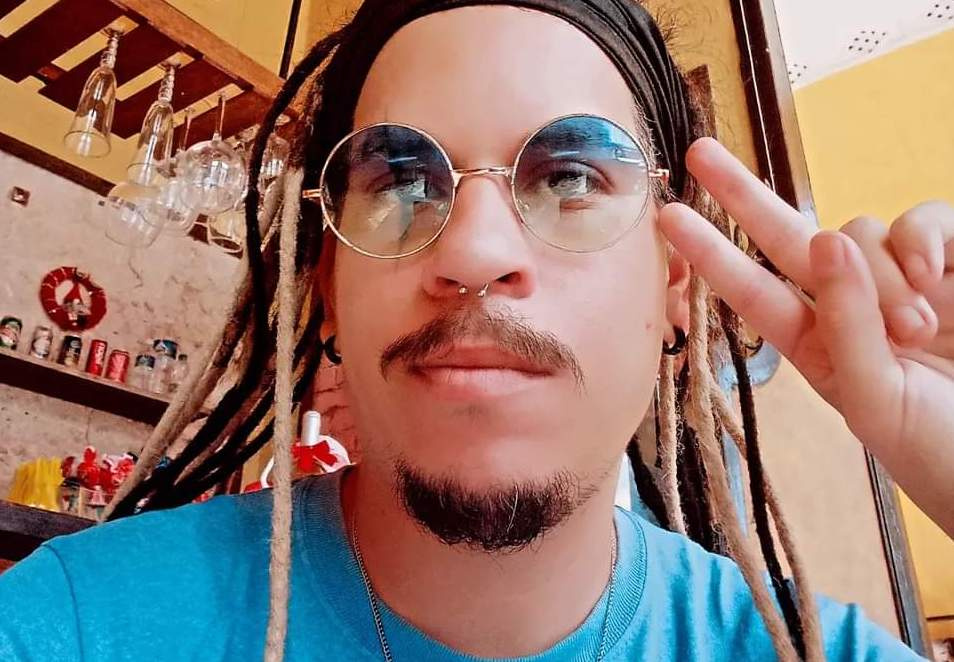 The Black journalist, Yadiel Hernández (pictured), also known as “Kakashi,” 33, “was arrested on January 24, 2025 and imprisoned in the Combinado del Sur Prison in Matanzas. He was released without charge on Monday, April 28, after being held incommunicado in prison for three months.
The Black journalist, Yadiel Hernández (pictured), also known as “Kakashi,” 33, “was arrested on January 24, 2025 and imprisoned in the Combinado del Sur Prison in Matanzas. He was released without charge on Monday, April 28, after being held incommunicado in prison for three months.
“In addition, he had to pay a fine of 15,000 pesos. Yadiel was arrested while investigating drug trafficking in a pre-university center in Matanzas. One of the sources close to the political prisoner indicated that he was arrested when there was a gas leak in that center, which caused many students to be hospitalized because of the strong smell and nausea.
“Following rumors about the sale of drugs in the pre-university, the police tried to repress all those who could denounce what had really happened. Consequently, the political prisoner, who had been investigating this drug trafficking network for some time, was arrested. After his arrest, he remained in the State Security barracks in Matanzas for almost a month without judicial protection. During this time he was threatened, mistreated, interrogated, his phone and access to his accounts were confiscated, and the State Security erased the content he had uploaded to his social networks.”
 More broadly, the report said, “While the Afro-Cuban collective represents 33.7% of society, 843 of the 1,155 political prisoners registered at the end of April 2025, 73%, are of African descent. That is, 2.17 times higher than their representation in society. (Translation of photo caption: “Seven new political prisoners in April bring the total number in Cuba to 1,155 under the regime’s marked structural racism against Afro-descendants.”)
More broadly, the report said, “While the Afro-Cuban collective represents 33.7% of society, 843 of the 1,155 political prisoners registered at the end of April 2025, 73%, are of African descent. That is, 2.17 times higher than their representation in society. (Translation of photo caption: “Seven new political prisoners in April bring the total number in Cuba to 1,155 under the regime’s marked structural racism against Afro-descendants.”)
“The official declarations of the regime, presented to the Committee on the Elimination of Racial Discrimination (CERD) of the United Nations on December 16, 2024 certified that ‘Cuba has a population of 9,354,454 people. Of these, 66.3% are white, 9.5% black and 24.2% mulatto’.
“The figures of Afro-Cubans tortured under political and conscience imprisonment show one clearer indicator of persecution of this group. Of the 7 new political prisoners this past April, in addition, 5 are of African descent. This report aims to highlight the proven fact of racial persecution in Cuba.”
. . . Dire Times for Human Rights in Cuba
 Dire times for human rights in Cuba: An artist’s depiction of the writings of José Antonio Aponte (pictured), an Afro-Cuban organizer of a major slave rebellion in 1812, can’t be seen there because the artist is in a Cuban prison for engaging in a political protest.
Dire times for human rights in Cuba: An artist’s depiction of the writings of José Antonio Aponte (pictured), an Afro-Cuban organizer of a major slave rebellion in 1812, can’t be seen there because the artist is in a Cuban prison for engaging in a political protest.
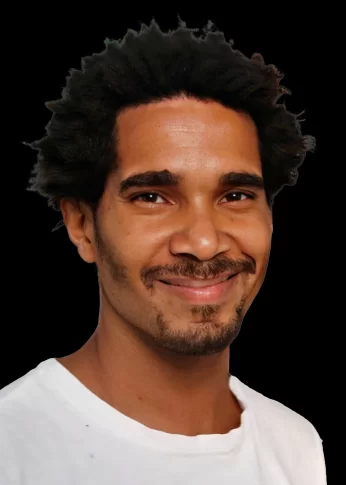 However, the drawings of artist and political prisoner Luis Manuel Otero Alcantara (pictured) are being shown in Barcelona, Spain, Diario De Cuba, which is published in Spain, reported Tuesday. They are part of an exhibition that opened on May 23 and will be open to the public until Jan. 11, 2026.
However, the drawings of artist and political prisoner Luis Manuel Otero Alcantara (pictured) are being shown in Barcelona, Spain, Diario De Cuba, which is published in Spain, reported Tuesday. They are part of an exhibition that opened on May 23 and will be open to the public until Jan. 11, 2026.
The story appeared two weeks after Morgan State University’s School of Global Journalism & Communication screened a film about a delegation from the school traveling to Cuba last year to denounce book banning of Black authors — not in Cuba, but in the United States. The Morgan State exhibit and film are called “AMERICA’S APARTHEID: Banning Black Books, Silencing Black Voices.” Book banning and lack of freedoms in Cuba — including freedom of the press — did not appear to be part of the discussion.
Meanwhile, evidence of especially dire times for human rights in Cuba continues to mount.
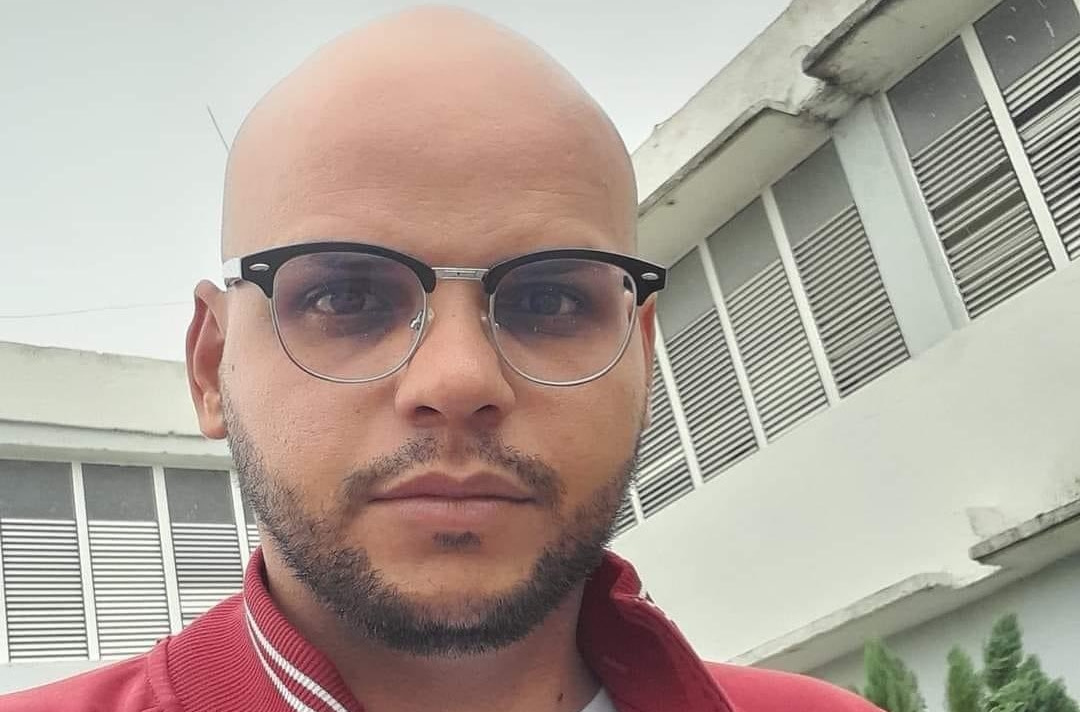 “Cuban independent journalist José Luis Tan Estrada (pictured) announced Wednesday on his social networks his arrival in Mexico, after a 45-day journey that included crossing the Darien jungle, five months after State Security forced him to leave the island,” Diario De Cuba reported from Mexico City. “The dictatorship forced me to risk my life, but it didn’t defeat me,” Estrada said.
“Cuban independent journalist José Luis Tan Estrada (pictured) announced Wednesday on his social networks his arrival in Mexico, after a 45-day journey that included crossing the Darien jungle, five months after State Security forced him to leave the island,” Diario De Cuba reported from Mexico City. “The dictatorship forced me to risk my life, but it didn’t defeat me,” Estrada said.
Earlier in May, the 84-year-old mother of a Cuban freelance journalist died without her imprisoned son able to see her in her last days.
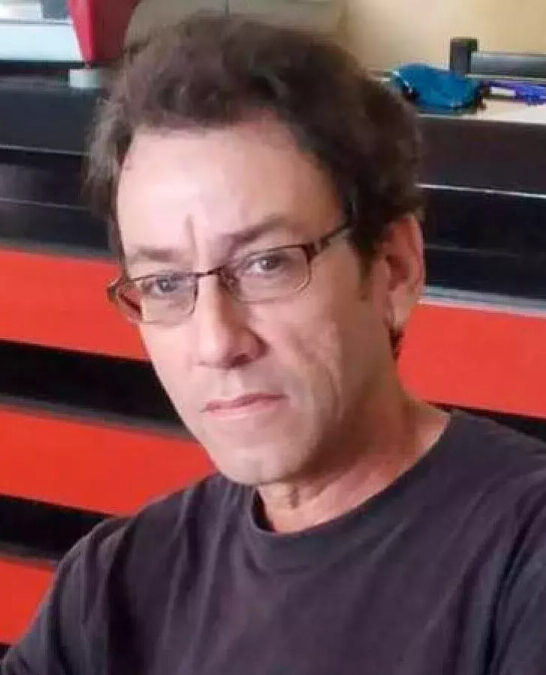 PEN America said, “José Gabriel Barrenechea (pictured), a Cuban independent journalist and author, has been detained since November 2024 after participating in protests over Cuba’s energy crisis. He was arrested for allegedly leading a demonstration and charged with ‘public disorder’, carrying a potential sentence of three to eight years.
PEN America said, “José Gabriel Barrenechea (pictured), a Cuban independent journalist and author, has been detained since November 2024 after participating in protests over Cuba’s energy crisis. He was arrested for allegedly leading a demonstration and charged with ‘public disorder’, carrying a potential sentence of three to eight years.
“Barrenechea’s detention has been marked by severe human rights violations, including poor prison conditions, denial of legal independent defence, and isolation from his family. His health has deteriorated due to a hunger strike, and his elderly mother, who was suffering from cancer and died on 4 May, [had] been denied the right to see him. PEN International calls for Barrenechea’s immediate release and an end to the repression of dissent in Cuba.”
In his own piece, Barrenechea wrote, “The fault is mine. Because, knowing the country I lived in, I committed the grave crime of joining my neighbors in the civic demand for electricity.”
Earlier, the organization Article 19 explained the health problems Barrenechea faced and what his absence meant for his mother, as he was her primary supporter and caregiver.
Meanwhile, the Cuban Institute for Freedom of Expression and the Press reported May 12:
“For the second consecutive month, the Cuban Institute for Freedom of Expression and the Press (ICLEP) has documented an alarming increase in violations of freedom of expression and the press in Cuba. In April, 112 attacks were recorded, representing a 16.67% increase compared to March, when 96 violations were reported.
“This upswing is not an isolated incident, but rather part of a structural and planned trend of systematic repression that intensifies as the regime faces increasing citizen criticism. The documented violations demonstrate the existence of a totalitarian model sustained by multiple repressive forces, whose purpose is to stifle any dissent or critical demonstrations. . . .”
Separately, Reporters Without Borders reported May 16 about Cuba’s chief patron, Russia:
“Since the beginning of Russia’s full-scale invasion of Ukraine on 24 February 2022, both Ukrainian and foreign journalists have come under Russian fire — even in their hotels, which also function as their workspace. A new report by Reporters Without Borders (RSF) and Ukrainian human rights organisation Truth Hounds (TH) documents these attacks, offences that amount to war crimes and must not go unpunished.”
- Ivan Leon, CiberCuba: Regime tightens control over families: Warns it will remove custody from parents who do not instill “love of the country.” (May 13)
- State Department: Announcement of Candidate to the Inter-American Commission on Human Rights (March 26)
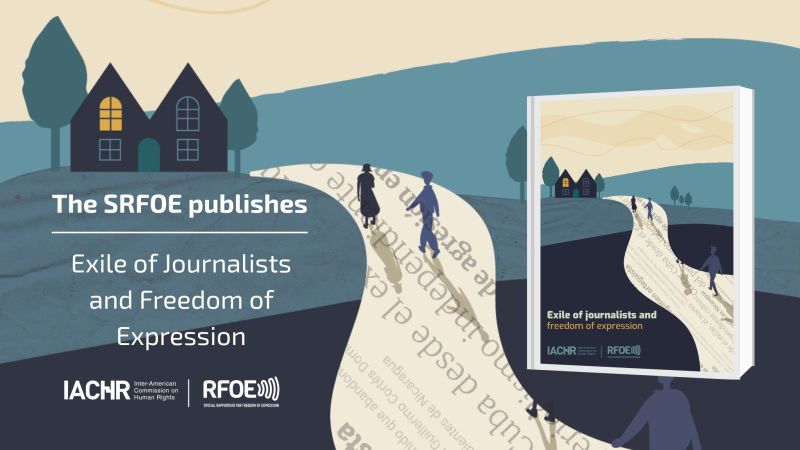
The report begins, “The forced exile of journalists has become a regional and global phenomenon, reflecting the deterioration of basic guarantees for the exercise of freedom of expression, which takes place within a context of democratic erosion, the closure of civic spaces, the intensification of repression by authoritarian governments, the decline of public confidence in governance and democratic institutions, and the increase in violence linked to organized crime.”
Americas Group Alarmed by Rise in Exiled Journos
A group that promotes and defends human rights in the Americas says it is concerned by “the significant increase in journalists forced into exile in the Americas during the period 2019-2024 due to political persecution, widespread violence and impunity.
“This trend has been particularly acute in Cuba, Nicaragua and Venezuela, where factors such as the systematic weakening of democratic institutions, the instrumentalization of the judicial system and targeted violence against the press have driven hundreds of journalists out of their countries. . . .”
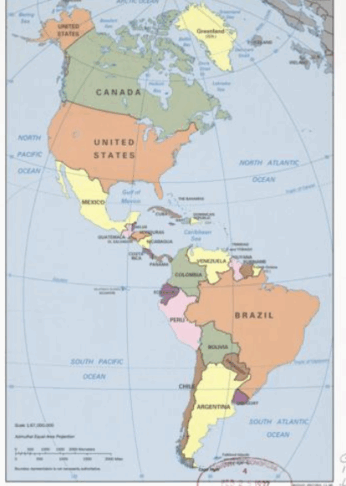 The group is the Office of the Special Rapporteur for Freedom of Expression, created by the Inter-American Commission on Human Rights (IACHR) “to encourage the hemispheric defense of the right to freedom of thought and expression.” It operates under the umbrella of the Organization of American States.
The group is the Office of the Special Rapporteur for Freedom of Expression, created by the Inter-American Commission on Human Rights (IACHR) “to encourage the hemispheric defense of the right to freedom of thought and expression.” It operates under the umbrella of the Organization of American States.
The group’s April 15 report [PDF], publicized May 19, “details the multiple challenges exiled journalists face, including administrative and bureaucratic barriers to migratory regularization, physical and digital security risks that transcend borders, psychosocial and economic tolls of displacement, and limitations to the sustainability of the media and the continuity of journalistic work. The Rapporteurship warns about the differentiated impacts that exile has on women journalists, who face additional obstacles stemming from structural discrimination and gender-based violence.”
Among the group’s recommendations are “adopting special emergency humanitarian visa programs for journalists at risk and their families, with simplified application procedures and flexible documentation criteria; and recognizing persecution for journalistic work as grounds for granting international protection, incorporating into their regulatory frameworks the specific risks faced by journalists and their families.”
It also said, “The exile of journalists is a form of censorship aimed at silencing critical voices and deprive societies of their right to be informed. It constitutes a human rights violation that transcends individual harm, undermining the social dimension of freedom of expression by hindering access to information of public interest and weakening democratic debate and informational pluralism.” (Map credit: Library of Congress)
- El Ágora, Chile: Visa denial prevents Chilean journalist Nicolás Sepúlveda from receiving award in U.S. (May 22)
- Silvia Higuera, LatAm Journalism Review: Colombian journalist Claudia Duque rejects government apology over years of psychological torture (May 21)
- Silvia Higuera, LatAm Journalism Review: Latin American journalists seeking asylum in the US left with no clear path as immigration policies tighten (Feb. 26)
- Carlos S. Maldonado, El Pais, Spain: A group of prominent journalists and writers [including Martin Baron, former executive editor of the Washington Post] visits Guatemalan journalist José Rubén Zamora in prison: “I know I’m going to get out” (May 23)
- Nelson Rauda Zablah, “Democracy Now!”: Salvadoran Journalists Exposed Pres. Bukele’s Ties to Gangs. Then They Had to Flee to Avoid Arrest (May 14)
To subscribe at no cost, please send an email to journal-isms+subscribe@groups.io and say who you are.
Facebook users: “Like” “Richard Prince’s Journal-isms” on Facebook.
Follow Richard Prince on Twitter @princeeditor
Richard Prince’s Journal-isms originates from Washington. It began in print before most of us knew what the internet was, and it would like to be referred to as a “column.” Any views expressed in the column are those of the person or organization quoted and not those of any other entity. Send tips, comments and concerns to Richard Prince at journal-isms+owner@
View previous columns (after Feb. 13, 2016).
View previous columns (before Feb. 13, 2016)
- “Black Journalists Will Figure in Jimmy Carter’s Legacy” on Sirius XM’s “Urban View Mornings.” (video) (Jan. 3, 2025)
- Diversity’s Greatest Hits, 2018 (Jan. 4, 2019)
- Book Notes: Is Taking a Knee Really All That? (Dec. 20, 2018)
- Book Notes: Challenging ’45’ and Proudly Telling the Story (Dec. 18, 2018)
- Book Notes: Get Down With the Legends! (Dec. 11, 2018)
- Journalist Richard Prince w/Joe Madison (Sirius XM, April 18, 2018) (podcast)
- Richard Prince (journalist) (Wikipedia entry)
- February 2018 Podcast: Richard “Dick” Prince on the need for newsroom diversity (Gabriel Greschler, Student Press Law Center, Feb. 26, 2018)
- Diversity’s Greatest Hits, 2017 — Where Will They Take Us in the Year Ahead?
- An advocate for diversity in the media is still pressing for representation, (Courtland Milloy, Washington Post, Nov. 28, 2017)
- Morgan Global Journalism Review: Journal-isms Journeys On (Aug. 31, 2017)
- Journal-isms’ Richard Prince Wants Your Ideas (FishbowlDC, Feb. 26, 2016)
Richard Prince with Charlayne Hunter-Gault, “PBS NewsHour,” “What stagnant diversity means for America’s newsrooms” (Dec. 15, 2015)
- Book Notes: Journalists Follow Their Passions
- Book Notes: Journalists Who Rocked Their World

